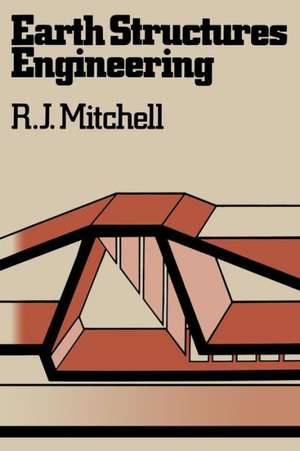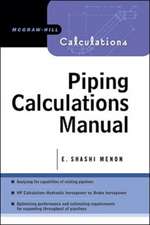Earth Structures Engineering
Autor R. Mitchellen Limba Engleză Paperback – 7 iul 1983
Preț: 387.20 lei
Nou
Puncte Express: 581
Preț estimativ în valută:
74.09€ • 77.20$ • 61.35£
74.09€ • 77.20$ • 61.35£
Carte tipărită la comandă
Livrare economică 03-17 aprilie
Preluare comenzi: 021 569.72.76
Specificații
ISBN-13: 9780046240042
ISBN-10: 0046240047
Pagini: 266
Ilustrații: XIV, 266 p.
Dimensiuni: 155 x 235 x 15 mm
Greutate: 0.4 kg
Editura: SPRINGER NETHERLANDS
Colecția Springer
Locul publicării:Dordrecht, Netherlands
ISBN-10: 0046240047
Pagini: 266
Ilustrații: XIV, 266 p.
Dimensiuni: 155 x 235 x 15 mm
Greutate: 0.4 kg
Editura: SPRINGER NETHERLANDS
Colecția Springer
Locul publicării:Dordrecht, Netherlands
Public țintă
ResearchCuprins
1 Earth structures and air photo interpretation.- 1.1 Earth materials: soils and rock.- 1.2 Basic information sources.- 1.3 Air photo interpretation.- 1.4 Rock landforms.- 1.5 Glacial landforms.- 1.6 Lacustrine, marine and alluvial landforms.- 1.7 Eolian and residual landforms.- 1.8 Uses of air photos in earth structures engineering.- 1.9 Other remote sensing and probing techniques.- 1.10 Problems on air photo interpretation.- 2 Earth mechanics in earth structures engineering.- 2.1 Strength and deformation of earth materials.- 2.2 Ground water and earth structures.- 2.3 Settlement of earth structures.- 3 Embankments and tunnels.- 3.1 Embankments on soft ground.- 3.2 Soft-ground tunneling.- 3.3 Problems on bearing capacity and tunnels.- 4 Slope stability.- 4.1 Types of slope movements.- 4.2 Slope stability analyses.- 4.3 Design charts for slopes in homogeneous materials.- 4.4 Crest loadings, dynamic loadings, submergence and drawdown.- 4.5 Recommended design factors of safety and procedures.- 4.6 Construction considerations and remedial measures.- 4.7 Permanent retaining walls.- 4.8 Problems on slope stability.- 5 Earth dams.- 5.1 Types of earth dams.- 5.2 Dam design considerations.- 5.3 Foundation treatments and efficiencies.- 5.4 Dam settlements and distortion.- 5.5 Earthquake and rapid drawdown design.- 5.6 Some special considerations in construction of earth dams.- 5.7 Monitoring, performance and maintenance of earth dams.- 5.8 Mine-tailings dams and process-water impoundments.- 5.9 Problems on earth dams.- 6 Ground subsidence and mine backfill.- 6.1 Ground control using backfill.- 6.2 Cemented tailings backfill design.- 6.3 Use of uncemented tailings backfill.- 6.4 Subsidence and surface effects.- 6.5 Problems on mine backfill and subsidence.- Appendix: units and symbols.- References.- Answers to problems.










